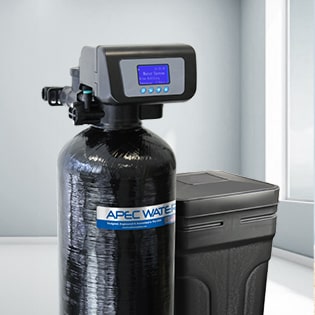Phosphorus (P), the 15th element on the periodic table with an atomic weight of 30.974, is an essential nutrient for all life forms. Phosphorus plays a role in deoxyribonucleic acid (DNA), ribonucleic acid (RNA), adenosine diphosphate (ADP), and adenosine triphosphate (ATP). Phosphorus is required for these necessary components of life to occur. Phosphorus is the eleventh-most abundant mineral in the earth's crust and does not exist in a gaseous state. Natural inorganic phosphorus deposits occur primarily as phosphate in the mineral apatite. Apatite is defined as a natural, variously colored calcium fluoride phosphate (Ca5F(PO4)3) with chlorine, hydroxyl, and carbonate sometimes replacing the fluoride. Apatite is found in igneous and metamorphic rocks, and sedimentary rocks. When released into the environment, phosphates will speciate as orthophosphate according to the pH of the surrounding soil.

Phosphate is usually not readily available for uptake in soils. Phosphate is only freely soluble in acid solutions and under reducing conditions. In the soil, it is rapidly immobilized as calcium or iron phosphates. Most of the phosphorus in soils is adsorbed to soil particles or incorporated into organic matter (Smith, 1990; Craig et al., 1988; Holtan et al., 1988). Phosphorus in freshwater and marine systems exists in either a particulate phase or a dissolved phase. Particulate matter includes living and dead plankton, precipitates of phosphorus, phosphorus adsorbed to particulates, and amorphous phosphorus. The dissolved phase includes inorganic phosphorus (generally in the soluble orthophosphate form), organic phosphorus excreted by organisms, and macromolecular colloidal phosphorus. The organic and inorganic particulate and soluble forms of phosphorus undergo continuous transformations.
The dissolved phosphorus (usually as orthophosphate) is assimilated by phytoplankton and altered to organic phosphorus. The phytoplankton is then ingested by detritivores or zooplankton. Over half of the organic phosphorus taken up by zooplankton is excreted as inorganic P. Continuing the cycle, the inorganic P is rapidly assimilated by phytoplankton (Smith, 1990; Holtan et al., 1988). Lakes and reservoir sediments serve as phosphorus sinks. Phosphorus-containing particles settle to the substrate and are rapidly covered by sediment. Continuous accumulation of sediment will leave some phosphorus too deep within the substrate to be reintroduced to the water column. Thus, some phosphorus is removed permanently from biocirculation (Smith, 1990; Holtan et al., 1988).
A portion of the phosphorus in the substrate may be reintroduced to the water column. Phosphorus stored in the uppermost layers of the bottom sediments of lakes and reservoirs is subject to bioturbation by benthic invertebrates and chemical transformations by water chemistry changes. For example, the reducing conditions of a hypolimnion often experienced during the summer months may stimulate the release of phosphorus from the benthos. Recycling phosphorus often stimulates blooms of phytoplankton. Because of this phenomenon, a reduction in phosphorus loading may not be effective in reducing algal blooms for a number of years (Maki et al., 1983). Health Effects of Phosphates: Phosphate itself does not have nota
As a result, organic particles that harbor microorganisms may not be completely removed before distribution. The growth of macrophytes and phytoplankton is stimulated principally by nutrients such as phosphorus and nitrogen. Nutrient-stimulated primary production is of most concern in lakes and estuaries, because primary production in flowing water is thought to be controlled by physical factors, such as light penetration, timing of flow, and type of substrate available, instead of by nutrients (McCabe et al., 1985). Freshwater system impacts: Generally, phosphorus (as orthophosphate) is the limiting nutrient in freshwater aquatic systems. That is, if all phosphorus is used, plant growth will cease, no matter how much nitrogen is available. The natural background levels of total phosphorus are generally less than 0.03 mg/l. The natural levels of orthophosphate usually range from 0.005 to 0.05 mg/l (Dunne and Leopold, 1978).
Many bodies of freshwater are currently experiencing influxes of phosphorus and nitrogen from outside sources. The increasing concentration of available phosphorus allows plants to assimilate more nitrogen before the phosphorus is depleted. Thus, if sufficient phosphorus is available, elevated concentrations of nitrates will lead to algal blooms. Although levels of 0.08 to 0.10 mg/l orthophosphate may trigger periodic blooms, long-term eutrophication will usually be prevented if total phosphorus levels and orthophosphate levels are Estuarine system impacts: In contrast to fresh water, nitrogen is generally the primary limiting nutrient in the seaward portions of estuarine systems (Paerl, 1993).
Here, nitrogen levels control the rate of primary production. If the system is supplied with high levels of nitrogen, algal blooms will occur. Systems may be phosphorus limited, however, or become so when nitrogen concentrations are high and N: P>16:1 (Jaworski, 1981). In such cases, excess phosphorus will trigger eutrophic conditions. The recommended level of total phosphorus in estuaries and coastal ecosystems to avoid algal blooms in 0.01 to .1 mg/l and 0.1 to 1 mg/l of nitrogen (a 10:1 ratio of N:P). The higher concentrations support less diversity (NOAA/EPA, 1988).



